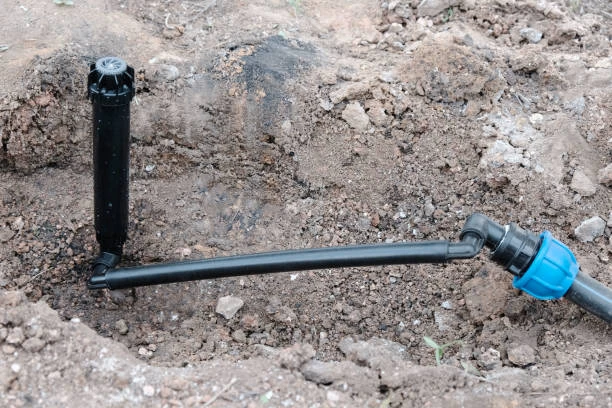Introduction
High-Density Polyethylene HDPE pipe have become essential in various industries due to their durability, flexibility, and resistance to corrosion. As industries strive for sustainability, understanding the life cycle of HDPE pipe manufacturing is critical. This article presents a comprehensive life cycle analysis (LCA) of HDPE pipe manufacturing, focusing on a case study from an Indian industry. We will explore the environmental impacts, benefits, and opportunities for improvement in the manufacturing process.

Understanding HDPE Pipe
HDPE pipes are versatile and widely used for water distribution, sewage systems, gas supply, and industrial applications. Their properties, such as high tensile strength, low weight, and resistance to chemicals, make them ideal for numerous applications. However, the environmental implications of their production and disposal necessitate a thorough analysis of their life cycle.
Life Cycle Analysis (LCA)
LCA is a systematic approach to evaluating the environmental impacts associated with all the stages of a product’s life, from raw material extraction to manufacturing, use, and disposal. The primary goal of LCA is to identify opportunities to reduce environmental impacts and improve sustainability.
Phases of LCA
- Goal and Scope Definition: Establishing the purpose of the study and the boundaries of the analysis.
- Inventory Analysis: Collecting data on resource consumption and emissions throughout the life cycle stages.
- Impact Assessment: Evaluating the potential environmental impacts based on the collected data.
- Interpretation: Analyzing results to identify significant impacts and improvement opportunities.
Case Study: Indian HDPE Pipe Manufacturing Industry
1. Goal and Scope Definition
The aim of this case study is to evaluate the environmental impacts of HDPE pipe manufacturing in India. The scope covers the extraction of raw materials, manufacturing processes, transportation, usage, and end-of-life disposal.
2. Inventory Analysis
Raw Material Extraction
HDPE is derived from petrochemical resources. The extraction of crude oil and natural gas involves significant energy consumption and environmental degradation. The key inputs include:
- Ethylene: Produced from crude oil and natural gas.
- Energy: Required for extraction, transportation, and refining processes.
Manufacturing Process
The manufacturing of HDPE pipes typically involves the following stages:
- Polymerization: Ethylene is converted into HDPE through polymerization, which requires considerable energy input.
- Extrusion: The HDPE is melted and formed into pipes. This process also consumes energy, primarily electricity.
- Cooling and Cutting: Once formed, pipes are cooled and cut to required lengths.
Data collected during the manufacturing stage indicates that significant amounts of energy are consumed, leading to greenhouse gas emissions.
Transportation
Transportation of raw materials and finished products contributes to the overall environmental impact. The transportation modes used, such as trucks and ships, result in fossil fuel consumption and associated emissions.
Usage
HDPE pipes have a long service life, often exceeding 50 years. During usage, they contribute positively by reducing leaks and conserving water. However, energy used in pumping fluids through pipes must also be considered.
End-of-Life Disposal
At the end of their life, HDPE pipes can be recycled, landfilled, or incinerated. Recycling is the most environmentally friendly option, while landfilling and incineration pose environmental risks.
3. Impact Assessment
The impact assessment phase involves evaluating the environmental consequences of each stage. Key indicators include:
- Greenhouse Gas Emissions: Emissions from raw material extraction, manufacturing, and transportation stages contribute significantly to climate change.
- Water Consumption: The production of HDPE pipes requires substantial water resources, impacting local water availability.
- Energy Use: The energy consumed during manufacturing represents a major impact area. Transitioning to renewable energy sources can mitigate these effects.
4. Interpretation
The analysis reveals that the manufacturing stage, particularly polymerization and extrusion, has the most significant environmental impact. Opportunities for improvement include:
- Energy Efficiency: Implementing energy-efficient technologies and practices can reduce energy consumption during manufacturing.
- Sustainable Sourcing: Utilizing bio-based feedstocks or recycled materials in the production of HDPE can lower environmental impacts.
- Recycling Initiatives: Establishing effective recycling programs can enhance the sustainability of HDPE pipe usage and reduce landfill waste.
Benefits of HDPE Pipe
Despite their environmental impacts, HDPE pipes offer numerous advantages that contribute to sustainability:
- Longevity: With a lifespan of over 50 years, HDPE pipes reduce the need for frequent replacements.
- Reduced Water Loss: HDPE pipes are leak-proof, minimizing water loss in distribution systems.
- Low Maintenance: Their resistance to corrosion and chemicals leads to lower maintenance costs over time.
- Recyclability: HDPE pipes can be recycled at the end of their life cycle, reducing waste.
Conclusion
The life cycle analysis of HDPE pipe manufacturing in the Indian industry reveals significant environmental impacts, particularly during the manufacturing and raw material extraction stages. By focusing on energy efficiency, sustainable sourcing, and recycling, manufacturers can enhance the sustainability of HDPE pipes. As industries move towards more sustainable practices, understanding the life cycle of products like HDPE pipes will be essential for minimizing environmental footprints.
FAQs
1. What is life cycle analysis (LCA)?
LCA is a systematic approach to evaluating the environmental impacts associated with all stages of a product’s life, from raw material extraction to disposal.
2. What are the environmental impacts of HDPE pipe manufacturing?
Key impacts include greenhouse gas emissions, water consumption, and energy use during production and transportation.
3. How long do HDPE pipe last?
HDPE pipes have a lifespan of over 50 years, making them a durable option for various applications.
4. Can HDPE pipe be recycled?
Yes, HDPE pipes can be recycled, which helps reduce waste and conserve resources.
5. What improvements can be made in HDPE pipe manufacturing?
Improvements can include enhancing energy efficiency, using sustainable materials, and establishing effective recycling programs.

















